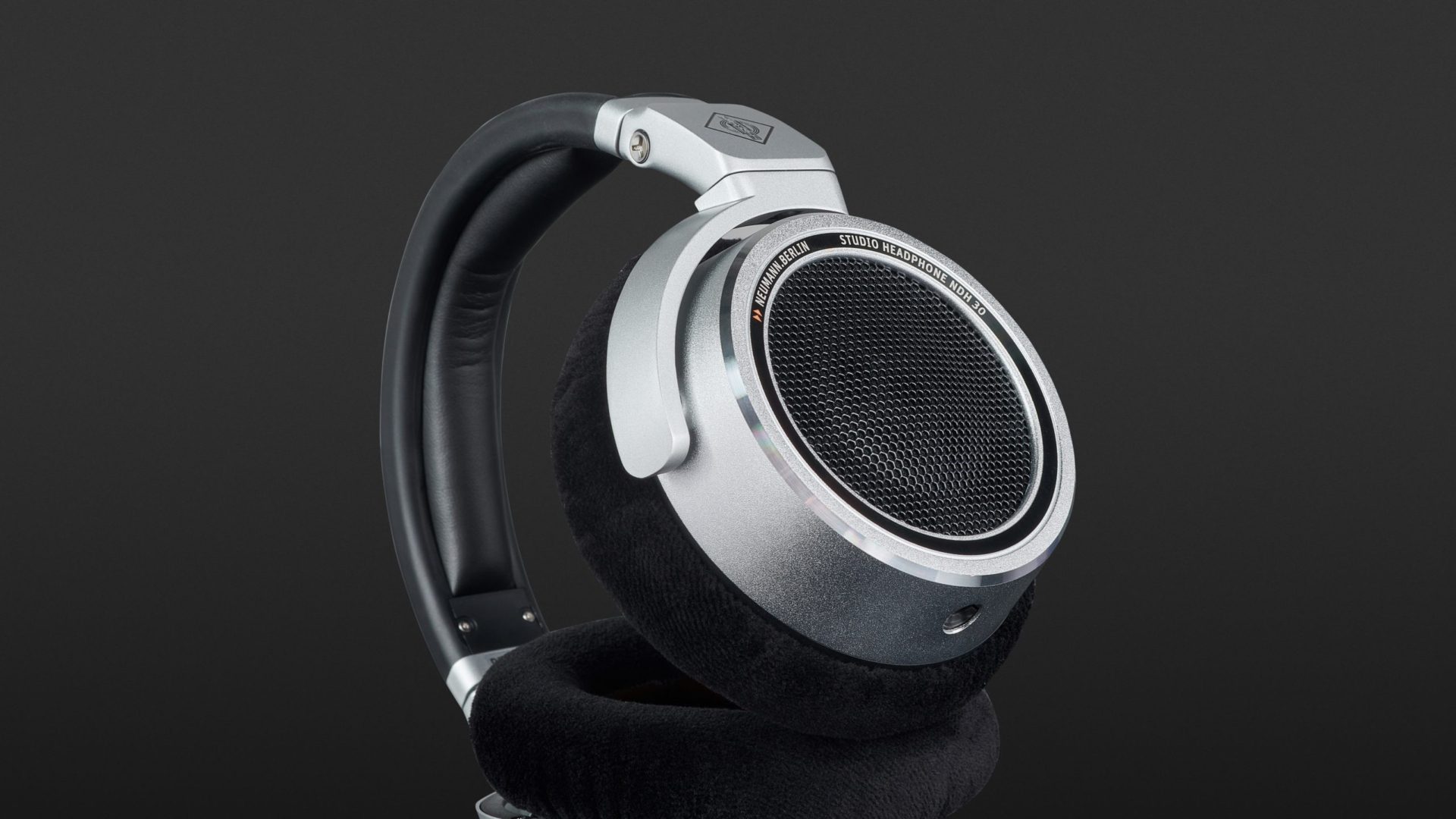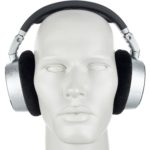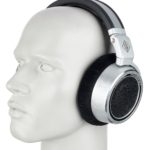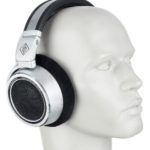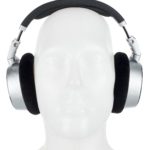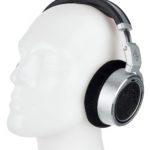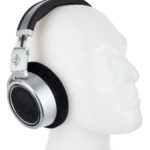With the NDH 30, Neumann delivers an ideal open equivalent to the NDH 20. With an analytical, largely neutral sound signature, these dynamic over-ear headphones get our recommendation right off the bat for use in studio applications with a clear focus on mixing, mastering and editing work. In addition to professional and semi-professional sound and broadcast studios, the NDH 30 is also ideally suited for computer and editing workstations and is also definitely recommended for discerning music lovers.
With the NDH 30, Neumann not only provide the perfect partner to the NDH 20 but also to its own KH control monitors. These open headphones act neutrally, analytically and coherently. This means we give this high-quality and comfortable over-ear our unqualified recommendation as a working tool for sound control, but they should also appeal to audiophile music listeners.

The name Neumann has stood for high-quality studio technology since 1928. There is hardly a recording studio that does not rely on the microphones of the renowned Berlin manufacturer. Since the takeover of Klein und Hummel by Sennheiser in 2005, Neumann, which has been part of the Sennheiser Group since 1991, also offers professional studio monitors. The development of headphones for this target market was, therefore, the obvious next step. The first of these was the closed over-ear headphones NDH 20, which have firmly established themselves since their market launch in 2019. The long-established manufacturer is now venturing forward with the NDH 30 open over-ear model, which goes one price bracket higher and is said to be recommended for production work due to its construction.
No-frills concept: the Neumann NDH 30’s technology
The Neumann NDH 30 are wired, and they aim to convince users simply through honest sound for professional sound production. The finish and the black-matt silver design are strongly reminiscent of the NDH 20. These headphones are supplied in a smart fold-out cardboard box with a cloth carrying pouch. The headphones themselves have a high-quality and distinctive look, are sturdily made, weigh less than 400 grams and are made of a mix of aluminium and plastic. The padded headband is adjustable via a spring steel band, while the large round earcups, which can be rotated by 90 degrees, use replaceable fabric-covered foam padding. The single-sided suspension of the earcups, both of which can be folded in for compact pack size, is an eye-catching feature.
Technically, Neumann relies on dynamic drivers with a 38mm diameter and neodymium magnets. According to the company, these drivers are manufactured with tight tolerances, which allows not only pair matching but also consistency across the board.
The drivers are installed at a slight angle, which is supposed to make the stereo impression generally more natural and compatible with speaker reproduction. The same principle is familiar from Ultrasone, for example. In addition, frequency-selective absorbers are used to prevent overemphasis in the high-frequency range.
Finally, the open construction allows the diaphragms to vibrate freely and quickly in both directions. They are protected from the outside by a perforated black metal grille. Another special feature is the symmetrical three-metre long connection cable, which is routed on one side. It ends with a 3.5mm jack with a screw adapter to the 6.3mm format. However, the symmetry is limited to just the cable and not the connection. Thus, the cable carries the left and right signals in separate but bundled cable strands within the cable, which only converge in the jack. According to Neumann, this technique leads to an improvement in channel separation. Neumann does not offer cables with symmetrical Pentaconn or XLR4 connectors. The corresponding interfaces are also exceptionally rare in the professional sector.
In practice
The Neumann NDH 30 fits comfortably on the head. The pleasantly soft fabric cover feels pleasant against the skin and does not cause much sweating. There are no extras, but the ear pads and the cable can be replaced. The latter can optionally be replaced by shorter or spiral cables.
As far as the outside level is concerned, the NDH 30 seemed somewhat half-open to me, because the sound emissions were distinctly muffled. Well, that’s not a disadvantage. With an average impedance of just under 122 ohms, the device we tested does not need an especially potent headphone amplifier, but it does not reach its full potential with a smartphone. So for my tests, I used the RME ADI-2 Pro FS and the portable DAP Shanling M3X.
Sound
In the over 500 euros price range, you should be expecting a lot. And indeed, the development department at Neumann has done its homework. The Neumann NDH 30 is no whitewash, but headphones for use in audio production. They sound comparatively neutral and are not intended to embellish any sources. According to the specifications, the NDH 30 is based on the sound of the KH monitor series, apart from the distinctly more pronounced stereo panorama, and this allows for overlapping mixes – a clever concept. The focus is on linearity and impulse fidelity: the aim is to transport the sound image of a listening position calibrated by MA1 with monitors from the KH series via the “tool” headphones, thus enabling the professional to transfer the mix.
This raises an elementary question about recording studio technology: should my “monitor” appear incorruptible or deliver a sound image that is oriented towards the consumer world? Neumann answers this question plainly: the NDH 30 has the goal of neutral reproduction. Of course, it is also intended to serve as a stand-alone means of reliably assessing audio signals and as an evaluation reference. This makes perfect sense, as headphones are now a highly prevalent system for playback – from stereo to immersive mixes and content from games.
The listening experience is business-like, balanced, detailed and dynamic, but by no means “boring”. The NDH 30 avoids superficial listening fun by emphasising many consumer products. This also explains why I had to turn up the level a little more in places. In general, the NDH 30 is a workhorse that doesn’t strain acoustically, even during long listening sessions.
In the bass, the NDH 30 is contoured but quite powerful. Low bass can be heard in full – but there is no question of bass emphasis. Depending on the mix, it sounds voluminous and deep (Nick Cave & The Bad Seeds: “Galleon Ship”), then bone-dry and lean (Kraftwerk: “Die Roboter”) or, as with “Lucky Lobsters” by 2raumwohnung, electronically punchy and warm.
The wider spectrum is reproduced analytically. In the midrange, instruments and voices of all kinds, whether acoustic, electronic or deliberately distorted, can be evaluated well. Differences are worked out, weaknesses are shown. Only a slight edge in the high mids is noticeable. Nevertheless, metallic guitars, which can often tend towards harshness, sound convincing when mixed appropriately – from AC/DC to Meshuggah and Slayer. Conversely, however, even explicitly warm rock mixes like “Sorceress” by Opeth do not sound too muted.
In the highs, the NDH 30 is honest and open. Unwanted harshness is absent, although the limits (Britney Spears “Toxic”) are revealed. Details and airiness are brought out convincingly and effortlessly by the fast response. The stereo panorama is also built up broadly, stably and with precise localisation. Spatial effects can be easily understood and assessed. Finally, the Neumann NDH 30 deserves real praise for its reproduction of dynamics.
To be fair, it must be noted that the measurement diagram does not show a straight line. This would also be too much to expect for a full-range driver and does not apply to any conventional passive headphones. However, the downwards linearity of 1 kHz is remarkable.
The driver stability was equally convincing. The NDH 30 reproduce even high levels and low bass with little distortion. At the same time, however, they reveal imprecision in the recording. The enormous low bass in Rihanna’s “Pon de Replay”, for example, is by no means completely pristine from the source.
Although the NDH 30 is explicitly aimed at professional clients, we were interested in comparing them with a headphone from the audiophile camp, such as the Sennheiser HD 660 S. Both models sounded wonderfully open and spacious, reproducing the midrange coherently and reaching deep down into the bass range. In my opinion, however, the NDH 30 ultimately comes out on top, although they cost more. Sennheiser’s HD 800 S is considerably more expensive. It relies on a leaner tuning with a treble emphasis that results in an impressive detail resolution and airiness that the NDH 30 can’t match. And Sendy Audio’s magnetostatic Peacock also justifies its more than doubled price in terms of further enhanced spaciousness.
However, this does not detract from the very good results of the NDH 30, but merely shows that there should still be room at Neumann for an even higher-quality model.
Technical specifications
- Ear couplingOver-ear
- Typeopen
- Transducer principledynamic
- Frequency response (headphones)12 - 34.000 Hz
- Impedance121,95 ohms
- Sound pressure level (SPL)96,46 dB
- Pressure averaged from big and small head660 g
- Weight with cable425 g
- Weight without cable350 g
- Cable length300 cm
What's in the box
- balanced connection cable
- 6.35mm stereo jacke
- Travel pouch











